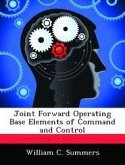The problem addressed in this thesis is whether the forward air control portion of the Tactical Air Control System (TACS) can be a viable force in a projected NATO-Warsaw Pact conflict given existing equipment and manning. Areas addressed included the present TACS structure and manning, current FAC vehicles, enemy threat vulnerabilities, new techniques and tactics, communications jamming, crew training and equipment utilization. Consideration was given to the Final Report of the 1973 world-wide FAC conference recommendations. Conclusions drawn from the research sources were: (1) The threat is not insurmountable. Proper training and tactics application can provide a survivable environment for the fixed wing FAC. (2) Although aging and no longer state-of-the-art, present equipment, properly utilized, can be satisfactory to do the job. (3) Present manning can be adequate if certain restructuring of personnel is implemented. Proper management of limited resources can fill the requirements with minimum impact on other operations. (4) Improved knowledge of all team members jobs and capabilities by other members, coupled with a hand-held computer system can enhance target identification, designation and strike to a very acceptable level. The total integration of an effective forward air control system hinges on the understanding of the problems involved and willingness by all concerned to become flexible and innovative in the efficient use of existing equipment and personnel. Cooperation among units of the USAF and between USAF and US Army units will give the only workable solution to this problem.
Hinweis: Dieser Artikel kann nur an eine deutsche Lieferadresse ausgeliefert werden.
Hinweis: Dieser Artikel kann nur an eine deutsche Lieferadresse ausgeliefert werden.








